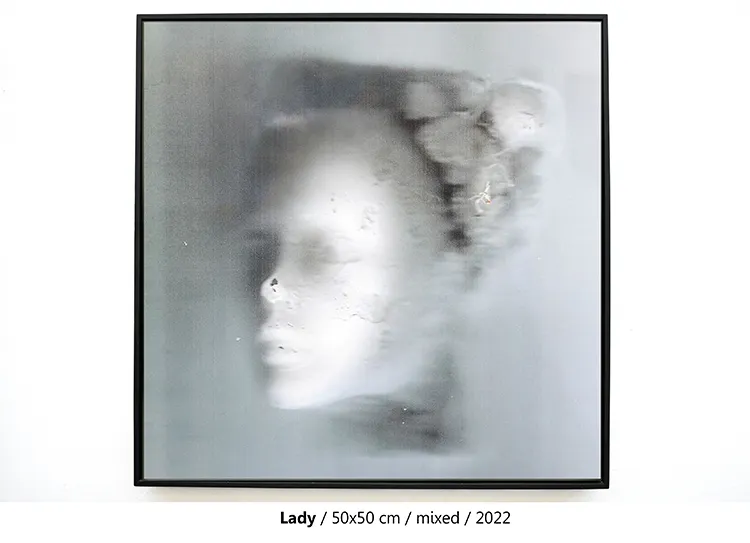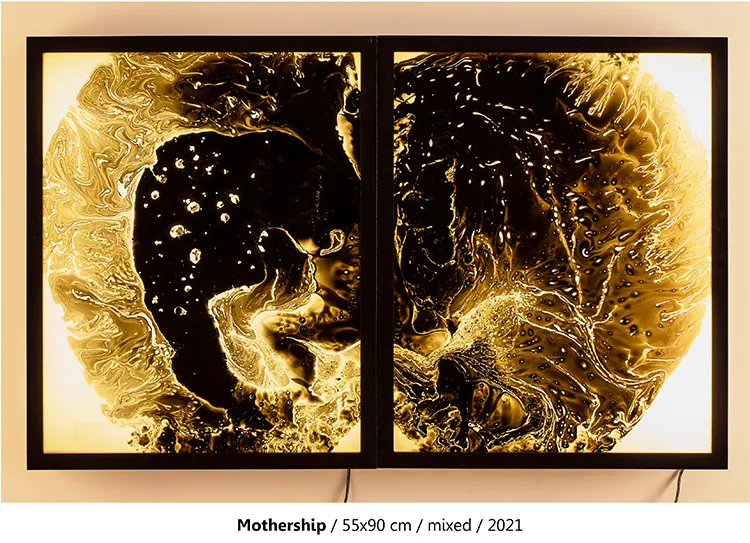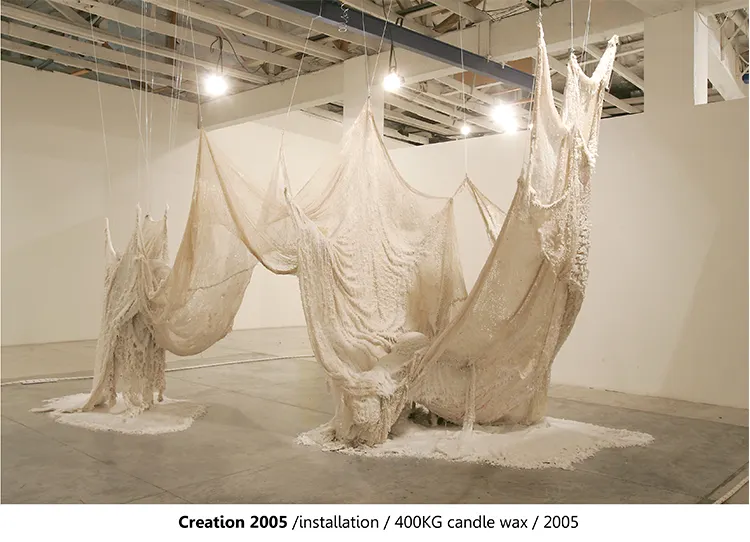“My art seeks to create immersive experiences that challenge perceptions and stimulate reflection on the intricate web of relationships that define our existence.”
Architectural Foundations and Artistic Evolution
Rinat Shaina Davidovich is an artist whose creative journey is deeply intertwined with her background in architecture. Born in 1977, she pursued a bachelor’s degree in architecture at the College of Management Academic Campus, later refining her artistic sensibilities through additional studies at the Calisher Art School. This dual foundation in structured design and artistic experimentation informs her distinctive approach, where precise architectural principles meet the unpredictability of organic materials. Her transition from interior design to fine art was not a departure but an expansion—one that allowed her to push the limits of spatial perception and material interaction.
Her artistic process is an intricate exploration of the relationship between physical substances and their conceptual weight. She employs unconventional materials such as sand, cement, candle wax, and pigments, manipulating them into sculptural forms that balance fragility and permanence. Through casting, layering, and molding, Davidovich transforms these raw elements into three-dimensional compositions that invite tactile engagement. The physicality of her materials is not merely a medium but an integral part of the narratives she constructs, bridging the divide between the tangible and the ephemeral.
A defining aspect of her practice is the interplay between sculpture and digital representation. After completing a physical work, she often scans it, converting its form into a two-dimensional image that captures a fleeting moment in its existence. This process does not simply document the artwork but extends its conceptual reach, questioning the permanence of objects and the shifting nature of perception. By blurring the boundaries between physical creation and digital transformation, Davidovich challenges the viewer to reconsider the essence of materiality and the ways in which art can exist in multiple states.

Rinat Shaina Davidovich: A Dialogue Between Tradition and Modernity
Davidovich describes her artistic style as “Modern Classic,” a term that encapsulates her ability to merge classical artistic traditions with contemporary methodologies. Her work incorporates elements of historical figuration, particularly images of the human body and internal organs, yet she employs modern techniques such as scanning and digitization to redefine these forms. This synthesis creates a compelling discourse between past and present, inviting reflection on how artistic expression evolves while maintaining ties to its origins.
Minimalism and geometric clarity are central to her aesthetic. She favors simplicity in structure, often utilizing concrete and sand—materials commonly associated with modernist architecture. However, these stark, rigid forms are counterbalanced by organic imagery and fluid compositions that evoke classical sensibilities. By juxtaposing order with abstraction, Davidovich crafts pieces that resonate with both historical reverence and contemporary relevance, offering a space where the viewer can navigate between structural precision and emotional depth.
A recurring theme in her work is the cyclical nature of existence, explored through her use of biodegradable materials. By allowing her installations to undergo natural transformation over time, she prompts dialogue about impermanence and renewal. This approach challenges traditional notions of artistic longevity, encouraging audiences to engage with the transient nature of materials and, by extension, the impermanence of life itself. Through these explorations, Davidovich continues to push the boundaries of what it means to create, preserve, and experience art.

The Emotional and Conceptual Depth of “Mothership”
Among her many works, Mothership stands as one of the most deeply personal and conceptually layered. Created during a period marked by her experiences with fertility treatments, this piece serves as a meditation on themes of creation, fragility, and the intricate balance between fate and intention. The work reflects on the biological and emotional complexities of conception, addressing notions of duality, connection, and the uncertainty of life’s beginnings.
The creation process of Mothership was itself an experiment in controlled unpredictability. Davidovich began with a transparent glass plate, upon which she poured a mixture of black oil paint, white plastic glue, and water. By pressing another glass plate on top and manipulating the materials between them, she allowed organic patterns to emerge—symbolic of the delicate and unpredictable nature of embryonic development. The separation of the plates resulted in two interconnected yet distinct forms, mirroring the themes of unity and division that underpin the work’s conceptual foundation.
Displayed as two illuminated lightboxes, Mothership invites viewers to engage with its layered surfaces, revealing hidden intricacies through the interplay of light and shadow. The backlit composition enhances the sense of depth, drawing attention to the delicate interconnections within the material. In this way, the work extends beyond its physical presence, serving as a metaphor for the invisible yet powerful forces that shape human existence. Through Mothership, Davidovich offers a poignant exploration of both personal and universal experiences, transforming intimate struggles into a shared space of contemplation.

Rinat Shaina Davidovich: Innovation Through Process and Material
Davidovich’s artistic ambitions extend beyond individual works, as she continuously seeks to refine and expand her creative process. One of her most intriguing aspirations is the development of a specialized tool or machine designed to automate the melting and dripping of wax—a material she frequently incorporates into her installations. This innovation would allow her to introduce new dimensions of randomness and control into her practice, pushing the boundaries of material behavior and artistic intervention.
Her wax-based installations already challenge traditional artistic methodologies by embracing the inherent fluidity and impermanence of the medium. By introducing mechanized processes, she envisions a dynamic interaction between human intention and material autonomy, where the act of creation becomes a live performance of transformation. This exploration aligns with her ongoing interest in temporality, as the wax, in its evolving states, reflects the transient nature of existence and the passage of time.
Beyond technical advancements, Davidovich’s vision underscores her broader artistic philosophy: an ongoing engagement with materiality, perception, and change. Whether through sculpture, digital reinterpretation, or interactive installations, her work continuously questions the boundaries between the physical and the intangible. As she continues to experiment and refine her techniques, her practice remains a testament to the ever-evolving dialogue between art, technology, and human experience.

The post Rinat Shaina Davidovich: Sculpting Emotions appeared first on AATONAU.
+ There are no comments
Add yours